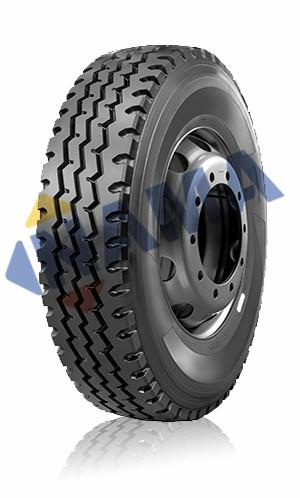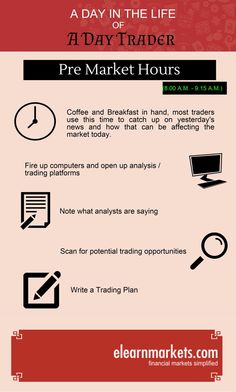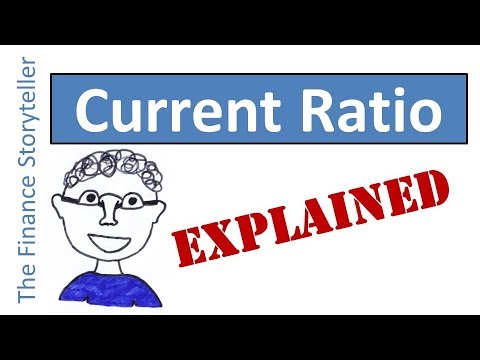

The accounting treatment of the FOB shipping point is important since adding costs to inventory means the buyer doesn’t immediately recognize an expense. This delay in recognizing the expense and changes in the buyer’s inventory affects the net income. Incoterms are international commercial terms published by the International Chamber of Commerce. They are meant to make foreign trade seamless with clearly defined roles for buyers and sellers in the global market. First developed in 1936, the terms more than 45 million companies in more than 100 countries. FOB contracts are generally more cost-effective because buyers have more control over shipping and insurance.
- First, certain products require specific documentation, types of containers, include hazardous materials, or are illegal to transport.
- The buyer is then responsible for paying the shipping costs to take possession of the goods.
- The equipment manufacturer would not record a sale until delivery to the shipping point; it is at this point the manufacturer would record an entry for accounts receivable and reduce its inventory balance.
- To further clarify, let’s assume that Claire’s Comb Company in the US purchases a container of The Wonder Comb from a supplier based in China.
In modern domestic shipping, the term is used to describe the time when the seller is no longer responsible for the shipped goods and when the buyer is responsible for paying the transport costs. Ideally, the seller pays the freight charges to a major port or other shipping destination and the buyer pays the transport costs from the warehouse to his store or vendors. The two terms have a specific meaning in commercial law and cannot be altered. The last distinction is important for determining liability or risk of loss for goods lost or damaged in transit from the seller to the buyer. Means that the seller pays for transportation of the goods to the port of shipment, plus loading costs.
Let us assume that a company orders office stationery for their newly launched office in the city. They get into a contract with the supplier and agree to specific terms. One of the terms in the agreement will be that the seller will deliver the goods on a FOB shipping point basis.
Country/region
This can lead to errors, which directly impact efficiency and productivity. In addition, it increases the risk of human error and can lead to delays due to lost or misplaced documents. These delays can cause delays in payment and customer satisfaction issues. The need to automate the processing of FOB shipping documents is a growing concern in the logistics industry. It is because of the high volume of transactions that occur daily and the manual handling of related documents. The buyer still pays additional fees like customs clearance, however.
Understanding Free Carrier (FCA) Shipping Terms – Investopedia
Understanding Free Carrier (FCA) Shipping Terms.
Posted: Fri, 24 Mar 2017 14:26:05 GMT [source]
Understanding the differences between each is as simple as knowing how much responsibility the buyer and supplier assume under each agreement. An FOB shipping point agreement is signed and the container is handed off to the freight carrier at the shipping point. You purchase goods from a supplier in China and agree to FOB shipping terms. The next three steps of the process are carried out at the supplier’s expense. The FOB incoterm is only applied to shipments being sent by sea or waterway.
Other FOB Terms
FOB shipping point is a further limitation or condition to FOB, as responsibility changes hands at the seller’s shipping dock. FOB shipping point and FOB destination indicate the point at which the title of goods transfers from the seller to the buyer. The distinction is important in specifying who is liable for goods lost or damaged during shipping. The primary difference between the two contracts is in the timing of the transfer of the title for the goods. – freight forwarding companies need to know what is being shipped for two significant reasons. First, certain products require specific documentation, types of containers, include hazardous materials, or are illegal to transport.
Incorporating Incoterms in Molding Contracts to Reduce Risk – Plastics Today
Incorporating Incoterms in Molding Contracts to Reduce Risk.
Posted: Mon, 19 Sep 2022 07:00:00 GMT [source]
FOB destination holds the seller responsible for the shipment’s transportation to the unloading dock of the buyer. If there are issues during the transit, the seller may even have to compensate the buyer based on the agreed terms. When the shipment arrives at the origin, the buyer needs to attain responsibility for them. Even if the seller pays the shipping charges initially, they may charge the customer later. Simply put, an incoterm is the standard contract used to define responsibility and liability for the shipment of goods.
Examples of FOB Shipping Point
It’s important that you have a clear understanding of FOB shipping so that you know what your rights and obligations are from the start of your contract. Means that the buyer will pay the freight charges once the goods arrive at the point of destination. On the flipside, the buyer must note in its accounting system that it has inventory on its way.
Buyers are able to sign with the shipper of their choice and take as much coverage as they see fit to insure their shipments. When businesses get into a CIF agreement, the seller remains responsible for all the costs related to shipping the goods. Sellers have a major role to play here as they have to transport the goods to the loading point and ensure it gets loaded for shipment.

Instead, the fob shipping point meanser holds complete accountability and needs to pay shipping costs. Buyers can also inspect the consignment and check for damages before clearing the payments. Sellers can record a sale when they deliver the shipment to the point of origin, where the buyer assumes the responsibility for the goods. Similarly, buyers need to record the goods in their inventory at that point. Even if the shipment takes a week or two to arrive, the inventory remains an asset in the accounts. Sellers remain responsible for the shipping costs at the FOB shipping point only till the goods arrive at the point of origin.
Since there is more than one set of rules, and legal definitions of FOB may differ from one country to another, the parties to a contract must indicate which governing laws are being used for a shipment. “FOB Origin” means the buyer assumes all risk once the seller ships the product. “FOB Destination” means the seller retains the title of the goods and all responsibility during transit until the items reach the buyer. LCL), your cargo will be loaded onto the truck and taken to a warehouse to consolidate your shipment with the other consignments sharing the same container. FCL), the truck will carry the container to the seller’s warehouse, and the seller will load the cargo directly into the container.
- Since FOB shipping point transfers the title of the shipment of goods when the goods are placed at the shipping point, the legal title of those goods is transferred to the buyer.
- In this case, the seller completes the sale in its records once the goods arrive at the receiving dock.
- With an automated system, the work can be done more quickly and accurately.
- FCA. Free Carrier, which means that the seller is obligated to deliver goods to an airport, shipping port, or railway terminal where the buyer has an operation and can take delivery there.
If the terms include “FOB origin, freight prepaid,” the buyer assumes the responsibility for goods at the point of origin, but the seller pays the cost of shipping. It is used to indicate who is responsible for the transportation costs of a shipment and which party takes ownership of the goods. FOB destination means that the buyer pays for all shipping costs and takes ownership of the goods once they have reached their final destination.
The buyers are always responsible for the freight costs to ship products under FOB Incoterms. Once you are satisfied with the shipping quotation, the next step is to inform your logistics company that you would like to use them to ship your products. Depending on where the cargo is traveling, they will usually send you some documentation, and ask you to sign an agreement stating that you wish for the forwarder to handle your shipment. The above five items are the essential pieces of information a freight forwarding company would need. Before you can obtain an accurate quotation from your logistics company, it is best to confirm the carton dimensions and weight and address where the collection with your supplier with taking place.
FOB clearly indicates whether the buyer or the seller is responsible for bearing the shipping costs. If the seller is responsible, it also specifies terms for reshipment in case of damages, losses, and thefts. In FOB destination, sellers take care of all the costs till they transport the goods to the unloading dock of the buyer. Beyond the unloading point, buyers need to take responsibility and bear any related costs.

Of the 11 different incoterms that are currently used in international freight, Free on Board is the one that you will encounter most frequently. International shipments typically use “FOB” as defined by the Incoterms standards, where it always stands for “Free On Board”. Domestic shipments within the United States or Canada often use a different meaning, specific to North America, which is inconsistent with the Incoterms standards. If the same seller issued a price quote of “$5000 FOB Miami”, then the seller would cover shipping to the buyer’s location. Under the Incoterms 2020 standard published by the International Chamber of Commerce, FOB is only used in sea freight and stands for “Free On Board”. Although FOB shipping point and FOB destination are among the most common terms, there are other agreements that vary from these two.
Then, the seller sends an invoice to the buyer for reimbursement when the items are delivered. When products are received at the location the customer specifies, ownership passes from the seller to the buyer. The seller maintains ownership of the goods–and responsibility for replacing damaged or missing items–under the FOB destination agreement until goods arrive at their destination. FOB destination, or FOB destination point, means that the seller is at risk to pay for the damage until the buyer receives the products. The seller selects the freight carrier and is responsible for shipping the goods to the final destination point. CIF is commonly used for large deliveries, including oversized goods, that are shipped by sea.
Once you have all of the above information, requesting a quotation from your supplier is easy, and you should be able to get your shipping rates in a couple of hours. For newer importers or importers who have always purchased under Incoterms where the seller organizes the freight costs, the process can seem more complicated, because there is an added step. However, the significant cost savings and control quickly outweigh this disadvantage.
Buyers and sellers often confuse FOB by understanding the shipment can be sent by any mode of transportation; this is not correct. The International Commerce Center , explains FOB is only viable for sea and inland waterway shipments. When not shipping via sea, buyers and sellers could consider FCA as a comparative Incoterm which works for all modes of transport. FOB destination point refers to a product sold to a customer after it arrives at the buyer’s destination. In contrast to the FOB shipping point, the seller may bear the risk of loss and responsibility for transportation expenses while the goods are in transit.
If anything happens to the goods on any leg of the journey to the buyer, the supplier assumes all responsibility. If the goods are damaged in transit, the buyer should file a claim with the insurance carrier, since the buyer has title to the goods during the period when the goods were damaged. With the advent of e-commerce, most commercial electronic transactions occur under the terms of “FOB shipping point” or “FCA shipping point”. Although FOB has long been stated as “Freight On Board” in sales contract terminology, this should be avoided as it does not precisely conform to the meaning of the acronym as specified in the UCC. Costs of shipment often reside with the seller as they are considered owners during transit.
CIF vs. FOB: What’s The Difference? (2022)- Alibaba.com – Alibaba
CIF vs. FOB: What’s The Difference? ( – Alibaba.com.
Posted: Thu, 16 Sep 2021 07:00:00 GMT [source]
Cost, insurance, and freight and free on board are international shipping agreements used in the transportation of goods between a buyer and a seller. However, the seller also manages the safe delivery of the shipment to its destination. The buyer will pay for the shipping charges along with the rest of the shipment amount. It requires the supplier to pay for the delivery of your goods up until the named port of shipment, but not for getting the goods aboard the ship. As such, FOB shipping means that the supplier retains ownership and responsibility for the goods until they are loaded ‘on board’ a shipping vessel. FOB value is generally selected by buyers who are familiar with international trade.